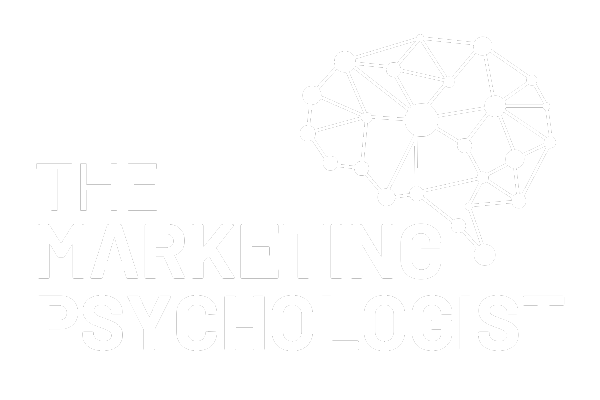Psychological Firewalls
5 Psychological Triggers That Keep Your Brand Safe in Uncertain Times
Global pandemics. Turbulent stock markets. Unpredictable platforms. So many uncontrollable shakeups that have launched businesses into an unrecoverable tailspin. But there are ways to build a brand and business that can navigate the storm. It starts with building strong psychological foundations.
This is not a hunch or a feel-good anecdote to the anxiety many business owners face. This is a science-backed and research-proven approach to ethically building a sustainable business. This article walks you through how to build a psychological firewall for your business.
What Is a Psychological Firewall?
Think of psychological firewalls as emotional and cognitive buffers that shield your brand from external threats. While most businesses focus on legal and financial safeguards, few deliberately build protective psychological mechanisms into their marketing.
These firewalls operate through well-established psychological principles. Cognitive fluency explains why people trust what's easy to process (Reber et al., 2004). Affective forecasting shows how people avoid emotional regret more than they pursue new benefits (Gilbert & Wilson, 2007). At their core, these mechanisms tap into our fundamental need for belonging – our drive to form and maintain strong interpersonal relationships (Baumeister & Leary, 1995).
The Psychological Impact of AI on Consumer Trust & Engagement
AI-generated content and hyper-personalization can either build or erode trust depending on its application (Taddeo & Floridi, 2018). Studies show that over-reliance on AI can create psychological distance between brands and consumers, reducing perceived authenticity (Lund, 2022).
But there’s a fix! Transparency in AI usage — such as disclosing AI-generated content — enhances consumer trust and aligns with ethical marketing practices (Edelman Trust Barometer, 2023).
Takeaway: AI-driven marketing must prioritize psychological safety and transparency to cultivate genuine connections.
The 5 Psychological Triggers That Safeguard Your Brand
1. Certainty
Our brains crave certainty, especially during chaotic times. Ambiguity creates anxiety, while clarity calms the mind and promotes action. This relates directly to Prospect Theory, which demonstrates that people fear loss more than they pursue gain (Kahneman & Tversky, 1979).
When brands provide clear, consistent messaging, they create a sense of psychological safety that builds resilience against market fluctuations.
2. Consistency
Consistency builds familiarity. Familiarity builds trust. Trust builds resilience.
I've observed how brands with cohesive messaging across all touchpoints create stronger bonds with their audiences. When your tone, values, visuals, and delivery remain consistent, you avoid the cognitive dissonance that can damage psychological safety and brand loyalty.
3. Belonging
People don't merely purchase products – they buy a place to belong. This insight from the Belongingness Hypothesis (Baumeister & Leary, 1995) explains why brands that create community around shared values maintain loyalty even through difficult times.
When marketing speaks to identity and affiliation, it creates connections that transcend transactional relationships. These connections increase brand loyalty and reduce price sensitivity.
4. Empowerment
Empowered buyers feel more in control – and less anxious – even during uncertain times. Self-Determination Theory highlights autonomy as one of three psychological needs for well-being (Ryan & Deci, 2000).
Brands that provide tools, education, and autonomy create a sense of empowerment that builds psychological resilience. This empowerment serves as a buffer against market uncertainties.
5. Emotional Safety
Pushy, manipulative marketing may drive short-term results, but it creates subconscious resistance that erodes long-term trust. Creating psychological safety (Edmondson, 1999) in your marketing means honoring your audience's emotional experience.
This means practicing emotional intelligence in your messaging, creating space for the consumer's experience, and building genuine relationships based on mutual respect.
Building Your Brand's Invisible Safety Net
When you integrate these five triggers into your brand strategy, you're not just crafting messages – you're protecting your audience's peace of mind. You're creating psychological resonance, where people feel seen, heard, and safe within your brand experience.
Ask yourself:
Is my messaging emotionally clear?
Are my values visible?
Does my customer feel autonomous?
Am I reinforcing identity and connection?
I've helped businesses implement these principles and transform their marketing from fragile to resilient. A commercial real estate firm I was working with leaned into supporting their tenants by acknowledging their struggles when the pandemic was in full swing. Services like PR and landlord-backed discount programs were established to help support businesses.
The result? A vacancy rate 10% under the national average. People even maintained their lease while buildings sat empty. The psychological firewalls built through those efforts had a long-term effect on the longstanding relationship of those tenants and the overall brand reputation of the firm in the community.
Why This Matters Now More Than Ever
The future of marketing isn't found in endless optimization or AI-driven automation. It's in humanity. These psychological firewalls aren’t tactics. They're your brand's ethical infrastructure.
As we navigate increasingly uncertain markets, the brands that will endure are those that honor the fundamental psychological needs of the humans they serve.
Which of these five psychological firewalls do you want to strengthen in your business? I'd love to hear your thoughts.
REFERENCES
Baumeister, R. F., & Leary, M. R. (1995). The need to belong: Desire for interpersonal attachments as a fundamental human motivation. Psychological Bulletin, 117(3), 497–529.
Edmondson, A. (1999). Psychological Safety and Learning Behavior in Work Teams. Administrative Science Quarterly.
Kahneman, D., & Tversky, A. (1979). Prospect Theory: An Analysis of Decision under Risk. Econometrica.
Reber, R., Schwarz, N., & Winkielman, P. (2004). Processing fluency and aesthetic pleasure. Personality and Social Psychology Review.
Ryan, R. M., & Deci, E. L. (2000). Self-determination theory and the facilitation of intrinsic motivation, social development, and well-being. American Psychologist.

